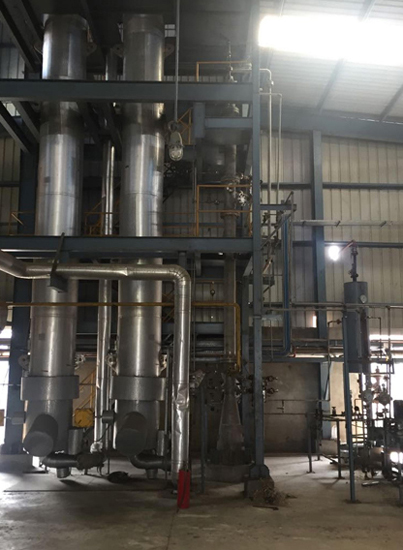Hydro-treating / Hydro-processing process involves reaction of hydrogen-rich gas with lube oil distillates to produce API Group II + Group III oils , under calculated conditions of pressure and temperature in presence of metallic catalysts.
The reactions include
- reactions with chlorine, sulfur, nitrogen that produce inorganic products such as HCl, H2 S and NH3.
- saturation of olefins that produce a stable, oxidation resistant product and
- aromatics saturation.
After the reactions are carried out in specially designed reactors, the high pressure gas is neutralized, cooled and recycled back to the reactors. Make-up hydrogen is added to compensate for reaction and solution losses. The oil (liquid) under high pressure is depressurized and contacted with steam to remove lighter naphtha-like fractions so as to meet specifications of volatility for the base oil product. The base oil product is cooled and sent to storage. The naphtha product is used as fuel in the process plant.
The off- gas containing H2S, mercaptan-like sulfurous compounds and very light hydrocarbons is sent to a thermal oxidizer/ flare . The mixture of naphtha, sour wash -water and condensed steam are collected in an oil-water separator. The sour water from the srubber , with dissolved H 2S and ammonia is stripped with steam. The overhead stream from the stripper, laden with H2S and ammonia is routed to the thermal oxidizer .







